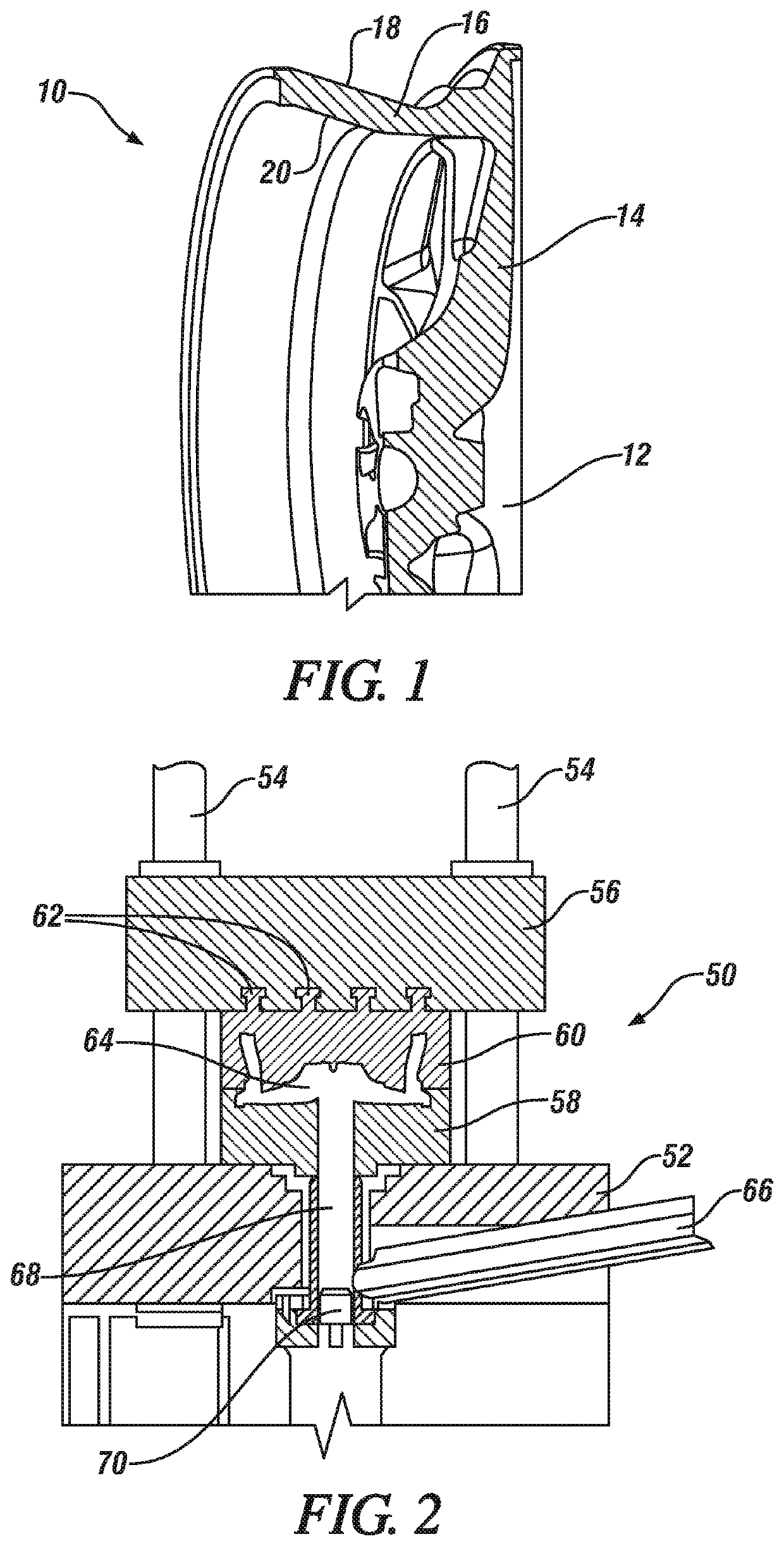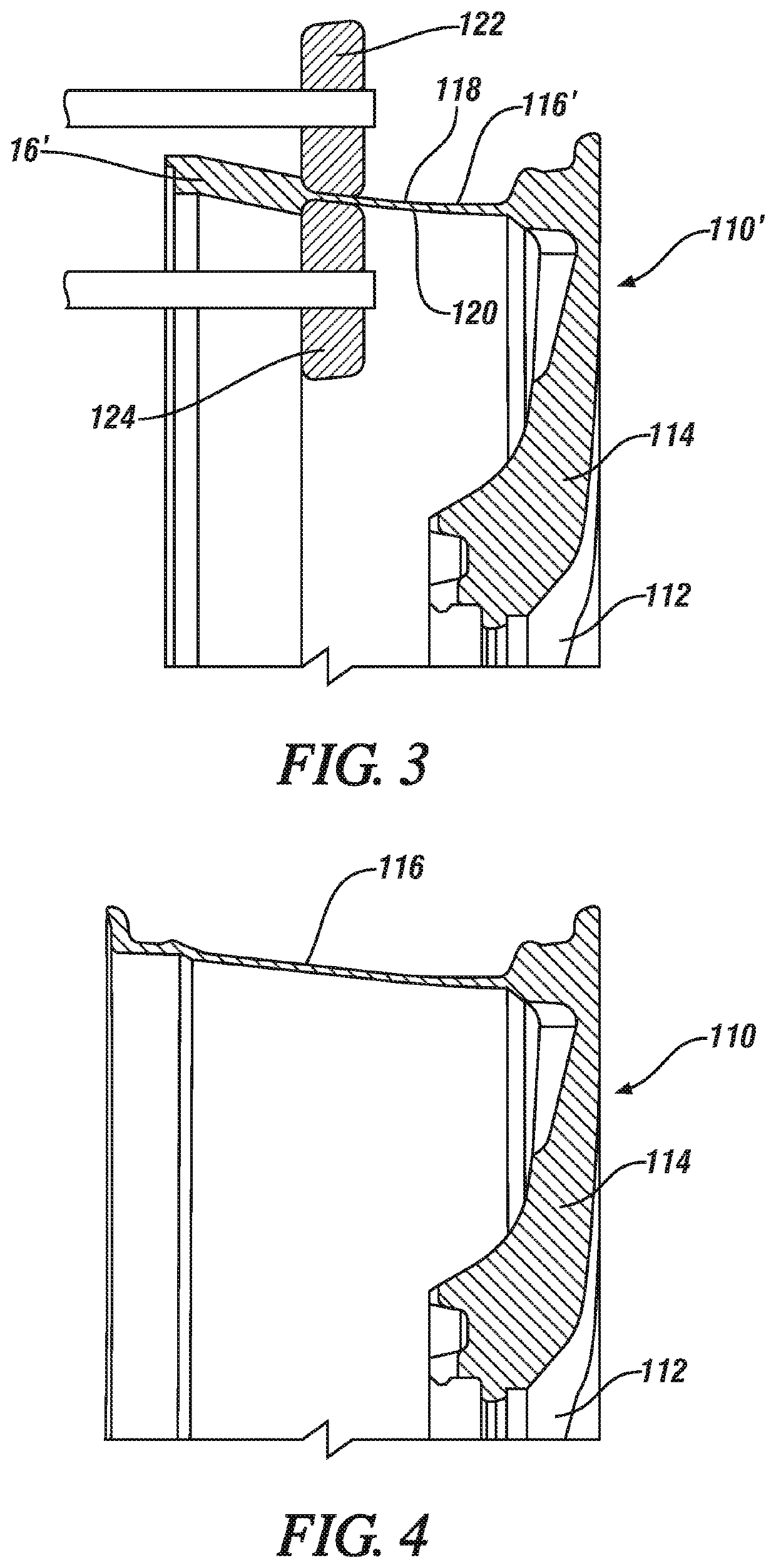Aluminum alloy for forming an axisymmetric article
a technology of axisymmetric articles and aluminum alloys, which is applied in the field of aluminum alloys for forming axisymmetric articles, can solve the problems of difficult to form the shape of axisymmetric articles by forging aluminum alloys, heavy loading on rotating objects, and complicated structures, etc., and achieves enhanced strength in the finished wheel and enhanced flow forming.
- Summary
- Abstract
- Description
- Claims
- Application Information
AI Technical Summary
Benefits of technology
Problems solved by technology
Method used
Image
Examples
Embodiment Construction
[0020]FIG. 1 is a diametrical cross-section of the upper half of a liquid forged, pre-formed, integral wheel structure 10 of an aluminum-based alloy, which is formulated to be processed in accordance with this invention to form wheels for an automotive vehicle. The liquid forged preformed wheel structure 10 comprises a central hub 12, several radial spokes 14, and a precursor or pre-formed rim structure 16. The respective members of the pre-formed wheel structure 10 are integrally formed of an LF-FF aluminum-based alloy. The central hub 12 is shaped to define an axis of rotation of the wheel. Several radially extending, equal length spokes 14 (for example, five to eight spokes) lie in a plane transverse to the axis of rotation of hub 12. One end of each of the spokes is integrally formed with the outer surface of the hub 12. The radially outward end of each of the spokes is integrally connected with a circumferential pre-formed rim structure 16. In this illustration, circumferential...
PUM
| Property | Measurement | Unit |
|---|---|---|
| temperature | aaaaa | aaaaa |
| temperature | aaaaa | aaaaa |
| elongation | aaaaa | aaaaa |
Abstract
Description
Claims
Application Information
 Login to View More
Login to View More - R&D
- Intellectual Property
- Life Sciences
- Materials
- Tech Scout
- Unparalleled Data Quality
- Higher Quality Content
- 60% Fewer Hallucinations
Browse by: Latest US Patents, China's latest patents, Technical Efficacy Thesaurus, Application Domain, Technology Topic, Popular Technical Reports.
© 2025 PatSnap. All rights reserved.Legal|Privacy policy|Modern Slavery Act Transparency Statement|Sitemap|About US| Contact US: help@patsnap.com


